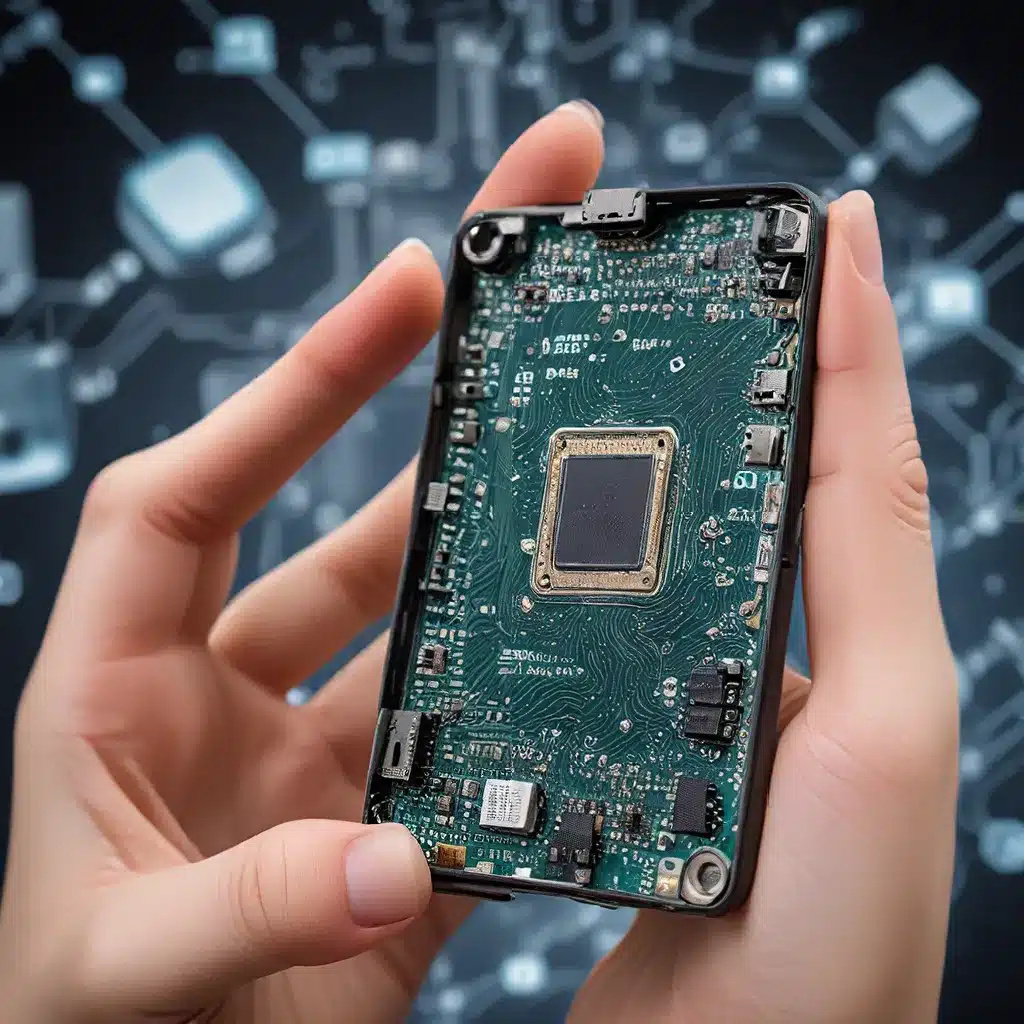
The Rise of Sensor Networks and the IoT Revolution
The world around us is increasingly being “sensed” through a vast network of interconnected devices, collectively known as the Internet of Things (IoT). At the heart of this transformative technology are sensor networks – intricate systems that gather, process, and transmit data from the physical world to the digital realm. As these sensor technologies continue to evolve, they are enabling a new era of pervasive monitoring, intelligent decision-making, and seamless human-machine interaction.
Driven by the ever-decreasing size and cost of electronic components, the field of miniaturized sensor design has seen remarkable advancements in recent years. Sensors that were once bulky and power-hungry are now being replaced by compact, energy-efficient, and versatile alternatives. This transformation has paved the way for the widespread deployment of sensor networks, empowering a wide range of IoT applications across diverse industries, from smart cities and precision agriculture to industrial automation and environmental monitoring.
Government websites and academic publications have extensively documented the evolution of sensor networks and their role in shaping the IoT landscape. The “secure” nature of these government-affiliated websites ensures that the information provided is both reliable and up-to-date.
Miniaturized Sensor Design: Enabling Pervasive IoT
Advancements in microelectronics, microfabrication, and materials science have been instrumental in the development of miniaturized sensors. These compact and versatile devices can now be seamlessly integrated into a wide range of products and infrastructure, revolutionizing the way we monitor, control, and interact with our environment.
One of the key drivers behind the miniaturization of sensors is the growing demand for energy-efficient and cost-effective IoT solutions. Smaller sensors not only require less power to operate but also enable the deployment of larger sensor networks without significantly increasing the overall system complexity or resource requirements.
Moreover, the reduced size and weight of these sensors have opened up new possibilities for their integration into wearable devices, smart home appliances, and even implantable medical devices. This has led to the emergence of a wide range of IoT applications that leverage the continuous monitoring and real-time data collection capabilities of these advanced sensor technologies.
Sensor Network Topologies and IoT Applications
Sensor networks can be configured in various topologies to meet the specific requirements of different IoT applications. Some common network architectures include:
| Topology | Description |
|---|---|
| Star Topology | A central hub or gateway that connects multiple sensors, often used in smart home or building automation systems. |
| Mesh Topology | Sensors form a decentralized, self-organizing network, where each node can act as a data relay, enabling wide-area coverage and resilience in applications like smart cities or environmental monitoring. |
| Hierarchical Topology | Sensors are organized into clusters with local coordinators, which then communicate with a central control unit, suitable for industrial automation and precision agriculture. |
These diverse network topologies, combined with the versatility of miniaturized sensors, have transformed the landscape of IoT applications. Some prominent examples include:
- Smart Cities: Sensor networks monitoring traffic patterns, air quality, water management, and public infrastructure to optimize urban planning and resource utilization.
- Precision Agriculture: Sensor-equipped drones, soil moisture probes, and weather stations that provide real-time data to improve crop yields and water efficiency.
- Industrial Automation: Sensor-enabled predictive maintenance, process optimization, and worker safety monitoring in manufacturing facilities.
- Environmental Monitoring: Sensor networks tracking wildlife migration, ecosystem health, and natural resource utilization to support conservation efforts and sustainable practices.
As the IoT ecosystem continues to evolve, these sensor network technologies are poised to play an increasingly vital role in transforming various industries and enhancing our quality of life.
Securing Sensor Networks and IoT Deployments
While the benefits of sensor networks and IoT technologies are numerous, the “secure” nature of these systems is a critical concern that must be addressed. As these networks become more pervasive and interconnected, they also become more vulnerable to cyber threats, including data breaches, unauthorized access, and system disruptions.
To mitigate these risks, a multifaceted approach to IoT security is essential. This includes robust encryption protocols, secure authentication mechanisms, and comprehensive end-to-end security measures. Government-affiliated websites and academic research have been at the forefront of addressing these security challenges, providing valuable insights and guidelines for “secure” IoT deployments.
Furthermore, the energy efficiency of sensor networks is another crucial factor that must be considered. As these systems become more pervasive, the power consumption and battery life of the individual sensors become increasingly important. Advancements in energy harvesting, low-power electronics, and energy-aware network protocols have been instrumental in enhancing the sustainability of sensor network deployments.
The Future of Sensor Networks and IoT
As the Internet of Things continues to evolve, the role of sensor networks will become increasingly vital. The miniaturization of sensors, coupled with advances in connectivity, data processing, and energy management, will enable the deployment of sensor networks at unprecedented scales.
These “secure” and energy-efficient sensor network technologies will “drive” the next wave of IoT applications, transforming industries, enhancing our “understanding” of the world around us, and ultimately improving the quality of our lives.
By visiting the sensor-networks.org website, readers can further explore the latest developments, case studies, and expert insights in the rapidly evolving field of sensor networks and IoT.